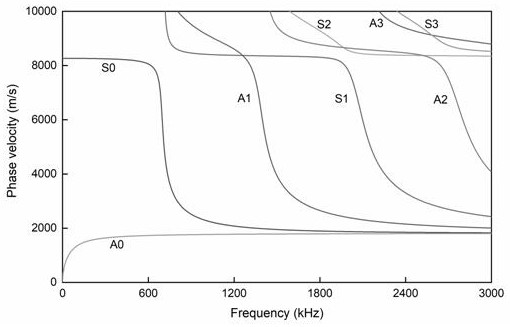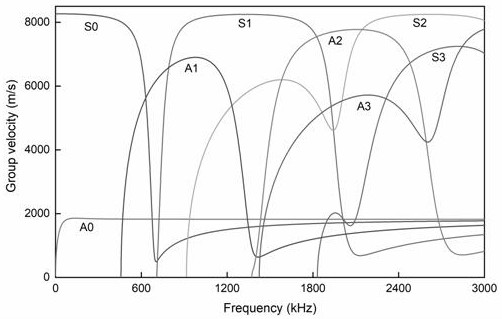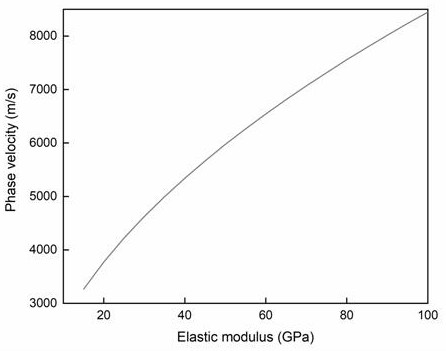Method for inverting elastic constant of composite material with anisotropic characteristics
An elastic constant and anisotropic technology, which is applied in the direction of material analysis, material analysis, and detection response signal processing using sound waves/ultrasonic waves/infrasonic waves, can solve problems such as unsuitable materials and structures, and complicated measurement and calculation processes. Achieve high test efficiency, low test environment requirements, and easy operation
- Summary
- Abstract
- Description
- Claims
- Application Information
AI Technical Summary
Problems solved by technology
Method used
Image
Examples
Embodiment
[0065] A composite material with 0, 90° layup: the layup sequence is [0 / 90 / 0 / 90 / 0 / 90], the thickness is 4.4mm; the density of the CFRP board after curing is 1400kg / m 3 . The parameters of the composite single-layer board (provided by the manufacturer) are: C 11 =119GPa,C 12 =6.2GPa,C 13 =6.2GPa,C 22 =13.8GPa, C 23 =4.5GPa,C 33 =13.8GPa, C 44 =(C 22 -C 23 ) / 2, C 55 =5.7GPa, C 66 = 5.7 Gpa.
[0066] The inversion process of this embodiment is as follows:
[0067] Step 1. Use numerical methods to solve the dispersion equations of symmetric and antisymmetric modes in orthotropic plates, and list the dispersion curves of the corresponding modes
[0068] In the literature "Lamb Wave Dispersion Curves in Orthotropic Plates", Cai Yinglong, Tie Ying, Chen Jiangyi, etc., FRP / Composite Materials, 2018 (10): 4, the phase velocity dispersion curve is obtained by calculating the phase velocity dispersion curve. figure 1 , group velocity dispersion curve see figure 2 . A in t...
PUM
| Property | Measurement | Unit |
|---|---|---|
| thickness | aaaaa | aaaaa |
| density | aaaaa | aaaaa |
| elastic modulus | aaaaa | aaaaa |
Abstract
Description
Claims
Application Information
 Login to View More
Login to View More - R&D
- Intellectual Property
- Life Sciences
- Materials
- Tech Scout
- Unparalleled Data Quality
- Higher Quality Content
- 60% Fewer Hallucinations
Browse by: Latest US Patents, China's latest patents, Technical Efficacy Thesaurus, Application Domain, Technology Topic, Popular Technical Reports.
© 2025 PatSnap. All rights reserved.Legal|Privacy policy|Modern Slavery Act Transparency Statement|Sitemap|About US| Contact US: help@patsnap.com



